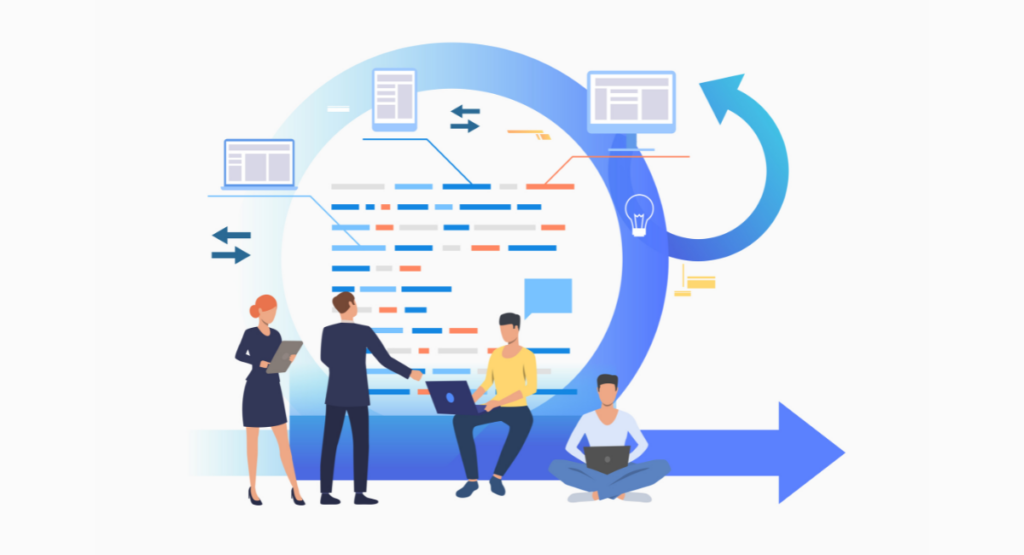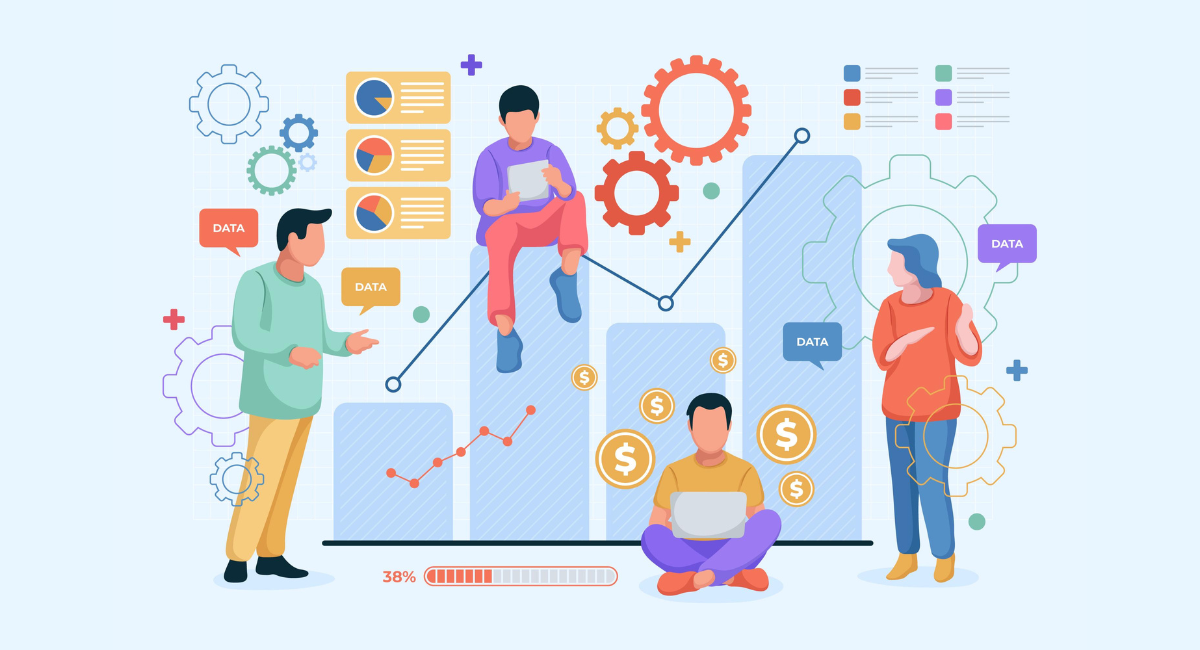Knowing the Software Development Life Cycle is very essential to any person involved in making software. SDLC defines a systematic procedure for the development of software, ensuring the quality and efficiency of the development process.
It constitutes a series of steps pivotal for the end goal of a high-quality functional software product. The chapter will teach you the end-to-end framework of all seven different phases of SDLC that software development professionals use to create an efficient software solution.
Be it a project manager, developer, or simply interested individual in the areas of software development, understanding these phases will prove important in giving insight into how successful software comes into being.
Overview of Software Development Life Cycle (SDLC)

What is Software Development Life Cycle (SDLC)?
The Software Development Life Cycle, or SDLC, is a systematic process that software developers and teams follow to design, develop, and test high-quality software.
It varies from planning, analyzing, and design to implementation and testing structured software development with several distinct phases wherein lies the specific objectives and milestones for each phase.
The methodology followed in the SDLC is meant to provide better quality, fewer bugs, customer expectations, or even more within the estimate of time and budget.
Importance of Software Development Life Cycle (SDLC)
The necessity of understanding and implementing the concept of SDLC is its ability to provide clarity and efficiency throughout the whole process of software development.
It will help developers decrease probable mistakes and facilitate the process for delivering software products. Besides, SDLC is necessary to handle the complexity of application development.
It provides a method of tracing and control over a great number of activities that guarantee successful software realization. SDLC provides a structured approach and is also helping toward risk management, resource management, and better communication between the stakeholders.
Phase 1: Planning

Definition of Planning Phase
The Planning phase is the first stage in the SDLC, where project leaders consider the terms of the project. It includes the definition of project goals, a feasibility study, cost estimation, resource allocation, and setting a project timeline.
The phase is thus a foundation for setting proper expectations of the delivery and the development of the software project. Elaborative planning through this phase yields a project plan that will be resourceful in guiding the entire team through the other phases of the SDLC.
Activities in Planning Phase
The various critical activities in the Planning phase are:
- Project identification and selection: Based on feasibility, benefits, and their compatibility with the organizational goals, projects can be identified.
- Definition of scope: It clearly defines what all the software project will achieve, and it delineates the project boundaries.
- Feasibility analysis: Technical, economic, legal, operational, and schedule feasibilities are assessed.
- Project plans: Project plans in the form of schedules, financial plans, and allocations of resources to the project plan.
- Risk assessment: It approaches the process of identifying possible risks and ways of overcoming it.
All these activities are aimed at establishing the foundation for the rest of the phases that follow in the SDLC.
Before any further steps are made into the system, the project has to be well-defined and feasible, and, at the same time, all the activities that are involved in a project have to be well-organized.
Phase 2: Requirement Analysis
Definition of Requirement Analysis Phase
It is the most important phase of the whole process in the SDLC itself; it is where all the project stakeholders and developers get together to understand the user needs and analyze them in the development of a requirement document in detail.
This would act as a guide for both design and development stages. Objects of this phase include determining precisely what the user needs from the software and whether the proposed system will meet business objects.
Requirement analysis essentially would mean collecting requirements through various techniques like interviews, questionnaires, or observing end-user activities.
Deliverables of Requirement Analysis
The major deliverables of the Requirement Analysis stage are the Software Requirements Specification document, which describes in detail the functional and non-functional requirements, scope, and limitations of the software.
Other major deliverables include cases that spell out user interaction scenarios in detail, and a requirement traceability matrix showing that each requirement is accounted for at each stage of the development process.
Phase 3: Design
Purpose of the Design Phase
The design phase gives solutions to the requirement envisioned in the previous phase.
The Design phase is responsible for defining the software architecture, components, interface, and data so that the final system is robust, scalable, and error-free.
It also lays down the foundation of the coding stage by defining the layout of the software in short technical terms.
Types of Designs in Software Development Life Cycle (SDLC)
There are usually two types of designs in SDLC: HLD- High-Level Design and LLD- Low-Level Design. HLD describes the architecture of the system integrating various components like databases, modules, and informs about their interaction.
On the other hand, Low-Level Design segregates the High-Level Design further into more details and specific design for each component. Under this would fall the pseudo-code and database table description, column names, and types.
These designs provide a blueprint that shall guide the Software Developers during the development process.
Phase 4: Implementation
Implementation Phase Overview
Implementation is the stage in the Software Development Life Cycle when the actual source code gets written to make software operational.
At this step, the designed specifications are translated into executable software by the developers. It is essential that the development team follow the prescribed guidelines and programming tools so as to achieve an error-free implementation.
Coding and Unit Testing
Developers start writing codes in this segment. This is achieved through a programming language that implements the software requirements and design documents developed in the previous stages.
Great attention is paid to the coding of every module of the software so that the working and integrating of the software may be allowed. Parallel to coding, the developers do unit testing.
In this stage, each unit or module of the software is tested so that the subparts of the software may work fine.
This step thus serves to identify any bugs in the code at the very earliest possible time, making later troubleshooting easier and guaranteeing that the integrity of the final product is maintained.
Phase 5: Testing
Importance of Testing in Software Development Life Cycle (SDLC)
Testing is the most crucial part of the Software Development Life Cycle because it checks the quality of the software. It is this stage that ensures that the software is checked for errors and bugs.
It ensures that the developed software is according to the pre-decided specifications and functional requirements. Thorough testing enables a reliable product that can execute consistently under a wide range of circumstances.
Types of Testing
There are basically two types of testing methods applied to the SDLC:
- Functional Testing: This phase confirms that all functions of the software work per the requirement specification.
- Integration Testing: It tests whether there is proper integration between modules of the software developed by different developers.
- System Testing: Tests the end-to-end product and checks whether the whole integrated software product meets the specified requirements.
- Acceptance Testing: This is usually done by the client in an environment provided to test whether the software should or shouldn't be accepted.
Test Plans and Execution
In this stage, detailed test plans are developed that include test strategies, objectives, schedule, resources, and deliverables. Testing procedures should be standardized as all this will do is help in maintaining consistency and efficiency of testing.
This is where test cases are designed against all the functionalities and scenarios. During the execution phase, these test cases run with the detection of differences between system behavior and expected results.
Proper documentation of the test outcome is important in offering insights into the software quality and further needs for maintenance.
Phase 6: Deployment
Deploying comes in as the last stage of the software created in the software development life cycle after all the previous development and testing activities.
This is where the software is put into the production environment or delivered to the user. Deployment may take the big bang approach or through small increments in a step-by-step manner.
Deployment Phase Objectives
The Deployment phase ensures that the installation of software functions as it was in the required/preferred environment without any disruption of the prevailing processes and workflows.
It is yet another critical phase that legitimizes much planning and the smooth coordination of the systematic transfer of software products from test environments into the live production environments to ensure compatibility, standards, and performance.
It ensures user training and the preparation of deployment kits: files that can be executed, with configuration settings and instructions included.
Post-Deployment Activities
Many post-deployment activities are believed to be vitally important in order to keep the software stable and usable even after deployment has been completed. These are:
- Any possible problems that were not identified during the test cases applied.
- Olivring support/troubleshooting for end-users adapting to the newly implemented software.
- Gathering of feedback from users for potential future releases/bugs.
Phase 7: Maintenance
It is essential for any software developed phase to be given the category of Maintenance once it has been officially deployed.
Definition of Maintenance Phase
Maintenance may also be seen as activities to be performed in offering help over a period following installation and in enhancing the software once in production.
Here, developers will deal with the 'many' real-world problems that crop up, including software bugs, security vulnerabilities, and other problems of performance and usability brought to their attention by users.
Continuous Improvement and Updates
The Maintenance phase focuses on the necessity of continuous improvement concerning the relevance and efficiency of the software. It involves:
- Upgrading software at regular points in time to add other features and further enhance those already provided, based on user feedback and emerging new technologies within the field
- Fast and timely patching of any security vulnerabilities to ensure the protection of users and their data
- Optimizing performance to ensure that through the advancement of hardware, the software can keep pace with the users' evolving needs.
These continuous efforts help in not only maintaining user satisfaction but also in extending the life cycle of the software to a considerable amount, making it a continuous tool and value to its end-users.
Book a Demo and experience ContextQA testing tool in action with a complimentary, no-obligation session tailored to your business needs.
Conclusion
Software Development Life Cycle serves as a complete framework that denotes the steps blowing under successful development for a given software project.
The phase of planning, analysis, implementation, testing, and deployment, including the maintenance phase, will ensure that functional and technical requirements are met while keeping a rein on time and budget.
Appreciation and execution of these phases result in the development of quality software that is robust, efficient, and responsive to the changing needs of customers.
Structured SDLC adoption further aids and supports proper documentation, communication, and project management in general, allowing for easier enhancements in the future and most efficient use of sof
Also Read - Explore 166000+ Software Engineer jobs in United States
We make it easy to get started with the ContextQA tool: Start Free Trial.
